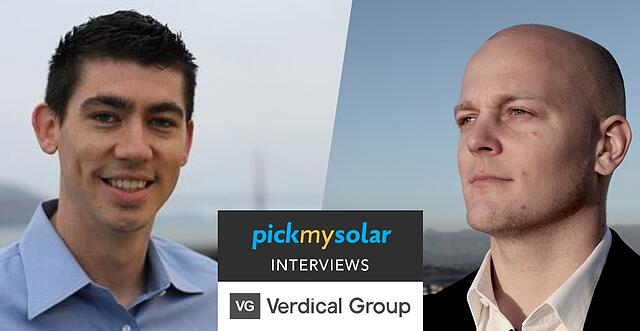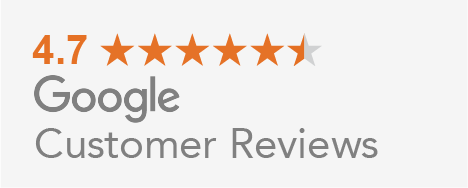
Pick My Solar is proud to be headquartered in the Los Angeles Cleantech Incubator in the Arts District of downtown of Los Angeles. The facility is filled with dozens of start-ups, non-profits, and established companies working to build a more sustainable world. In this series, we’ll be touching base with various leaders throughout the Incubator to learn more about what drives their business and how sustainability is permeating our world. Today’s guest is Drew Shula, Founder and Principal of Verdical Group, a nationally leading green building consulting firm with clients including General Electric, Cisco, Johnson & Johnson, Jones Lang LaSalle, the County of Los Angeles, and Kaiser Permanente health network.
Kyle Cherrick: Drew, what inspired you to create Verdical Group?
My fundamental drive is to make a positive impact on the world and make a living doing it. I studied architecture in college at the University of Notre Dame, but I didn’t want to be an architect. I grew up in Maine and have an innate love of the great outdoors. Green building allowed me to marry my knowledge of buildings with my love for nature. It took me awhile to get here, working on the architecture, real estate developer and consultant sides of the building industry, but now I can honestly say that I love what I do. Verdical Group is a reflection of who I am. We’re a for-profit company, fueled by private sector economic drivers, working to improve buildings so they make less of an impact on the natural environment. The difference between Verdical Group and a lot of other companies is that the more we grow, the greater positive impact we make.
KC: What trends do you see in the green building industry? What are you most excited about?
DS: Broadly speaking, the green building industry is rapidly evolving to encompass more than just sustainability. We are seeing the introduction of new green building certification systems that are highly specific, focusing on one aspect of the building instead of trying to cover the entire design, construction, and operation of buildings like the U.S. Green Building Council’s LEED rating system does. For instance, the WELL Building Standard is a fairly new rating system that focuses on the health of building occupants. WELL uses human anatomy and physiology as the basis for design decisions — for example, you can achieve points for designing a building that utilizes a significant amount of daylighting, which promotes natural circadian rhythms. While the cost to achieve WELL certification is high, wouldn’t it be great to live or work in a building that was optimized for your personal health and wellbeing? I think everyone wants that.
I am most excited about the growth of zero net energy (ZNE) buildings. In California alone, we already have over 100 registered, certified, or in-development ZNE buildings. This makes sense, as California has stated that it will slowly increase building energy efficiency codes (Title 24) until 2020, when the code will make it a requirement for all new residential buildings to be ZNE (and 2030 for commercial buildings). Speaking of net zero — I couldn’t do this interview without plugging our annual Net Zero Conference that is now the largest net zero building conference in the country. Come check it out in LA on August 24, 2017.
KC: What should every business know before “going green”?
DS: Operations cost savings from lower energy and water bills, and marketability aside, the main added benefit businesses should know about when deciding if they should “go green” with their building, facility, or office, is that employees will be happier and more productive. For some reason, people are just now awakening to the idea that working at a desk in a cubicle in an old, artificially lit building for 90% of our day, 5 days a week, isn’t a normal or healthy existence. Studies repeatedly show that employees in LEED and other green buildings score higher on cognitive tests, are more productive, and rate at higher happiness levels compared to those working in non-green buildings. A LEED building’s low toxin levels, natural ventilation, increased levels of natural lighting, and individual thermal comfort controls all positively impact happiness, wellness, and productivity.
KC: How do you support sustainable building practices outside of your core business? Are there any non-profits in the space you would like to highlight?
DS: As I mentioned previously, Verdical Group puts on an annual Net Zero: Energy + Water + Waste Conference in Los Angeles, where local utilities, municipalities, non-profits, architecture, construction, and engineering leaders present on net zero case studies and participate on panels. The event also features an exhibitor table expo and high quality networking opportunities that allow attendees to interface with cutting edge technology manufacturers and learn strategies for implementing net zero design solutions. The 2017 conference, projecting over 600 attendees, will be held at IBEW Local 11’s Net Zero Plus building in LA. The building is a ‘living laboratory’ dedicated to advancing energy efficiency technologies and will be the perfect venue for the building industry to convene and inspire a net zero future.
Aside from our own conference, we continue to support the U.S. Green Building Council Los Angeles Chapter (USGBC-LA) in planning the Municipal Green Building Conference & Expo (MGBCE) — the longest running annual green building conference in Southern California. I’m serving as Event Chair for the fourth consecutive year, and also serve on USGBC-LA’s Board of Directors.
The International Living Future Institute is an inspiring non-profit we always love to highlight as well. They are most known for the Living Building Challenge — the most stringent and difficult to achieve green building rating system in the world — that requires both net zero energy and net zero performance. We are active contributors to the Living Building Challenge Los Angeles Collaborative where I’m a member of the Steering Committee.
KC: Do you expect the new administration to affect your business at all? Will it increase or decrease the demand for sustainable building?
DS: The majority of our business is in California, so I don’t believe the new administration will impact Verdical Group very much. California’s future zero net energy (ZNE) code changes aren’t going anywhere. We are lucky to be in such a progressive state that holds high standards for energy efficiency and sustainable building design. I think our business will continue to grow significantly in the year to come. As we expand nationally, the benefits of green building are driven by dollar savings, which is never partisan. The astronomical green building industry growth over the past 20 years has been largely drive by private sector demand, not tax credits. There isn’t as direct a correlation between the White House and the green building market.
KC: What are some of the easiest or most common steps that a business can take to operate more sustainably?
DS: An easy first step a business can take to operate more sustainably is to locate itself in a high density area with easy access to mass transit. This not only encourages employees to take alternative forms of transportation, cutting down emissions, but also provides health benefits as well — employees commuting to work via light rail, metro, or bus will be walking further every week. On the same line of thinking, a business can also allow its employees to “telecommute.” This essentially means allowing employees to work from home once or twice a week to cut down on automobile use.
Now going into the steps that require some upfront cost — a business can invest in ENERGY STAR appliances, computers, laptops, and monitors, all of which will save energy and lower operational costs. Taking it one step further, you can invest in building energy management software and “smart outlets” that will monitor how much energy you are consuming in real-time, and will automatically turn off monitors or other devices on a timed schedule.
KC: How often do the projects you work on include solar? How do you see that changing in the future?
DS: Even with advances in technology and falling costs in the solar industry, we still only see owners willing to install solar in about 15% of our projects. But, we do expect that to change dramatically in the years to come as the cost of solar continues to decrease and building owners and developers start to take advantage of this.









